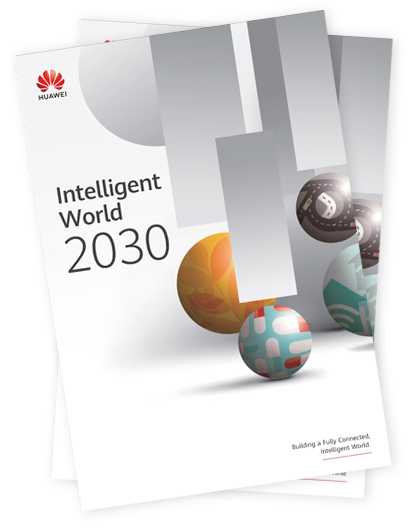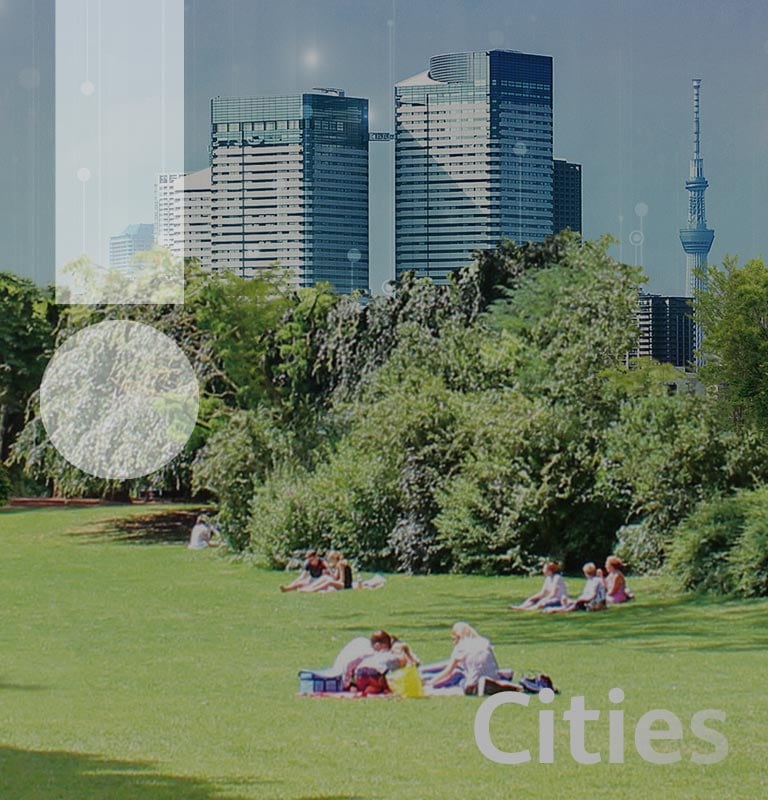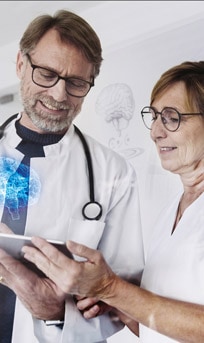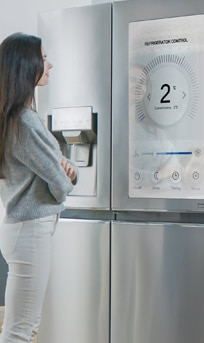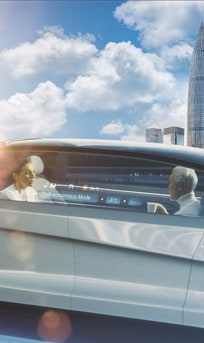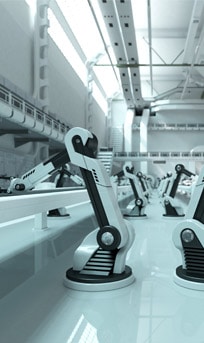New Digital Infrastructure Makes Cities More Human and Livable
The spread of new digital infrastructure will make for better management of the urban environment, with more efficient use of resources and more effective city government. Centralized digital platforms for government processes and services will make government services user-friendly and easier to access. This will help create more comfortable and livable cities.
Predictions
Directions for Exploration
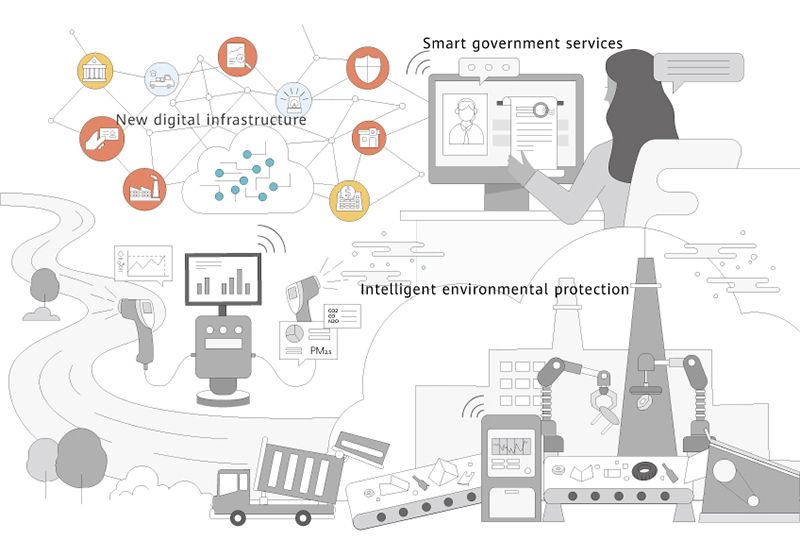
New digital infrastructure is the engine of digital cities
Snapshot from the future: Nanosensors track the pulse of the city
Just as people perceive their surroundings using their senses of sight, hearing, smell, taste, and touch, a city needs its own sense organs, deployed around the city, to sense what is changing. These sensors will provide the data that underpins the growth of a digital city.
Nanosensors are very small and precise, and will vastly improve sensing performance. Working at the atomic scale, they are expanding our understanding of what sensors can be, driving new advances in sensor manufacturing, and opening up new fields of application. Early applications of nanosensors cover many different fields, including biology, chemistry, mechanics, and aerospace.
- Graphene gas nanosensor: A nano-coating on the sensor's surface where it makes contact with the gas improves sensitivity and performance.
- Nanocrack-based acoustic sensor: Nanocrack-based acoustic sensors are able to recognize specific frequencies of sound. They are more sensitive than other acoustic sensors, as the spacing between cracks in nanocrack-based sensors can be as little as just a few nanometers.
Snapshot from the future: All-optical, 10 gigabit cities
High speed information flows require optical networks. With optical networks as the foundation, cities will be able to merge their operational infrastructure into their communications infrastructure.
The future architecture of an all-optical city will consist of four parts:
- All-optical network access: All network connections will be optical, including homes, commercial buildings, enterprises, and 5G base stations.
- All-optical anchors: Connections originating in home broadband, enterprise broadband, 5G networks, or data centers will be routed and transmitted through all-optical networks.
- All-optical switching: One-hop access to services through urban optical networks. All-optical cross-connect technologies are used to build multi-layer optical networks.
- Fully automated O&M: Real-time sensing of network status with proactive, preventive O&M.
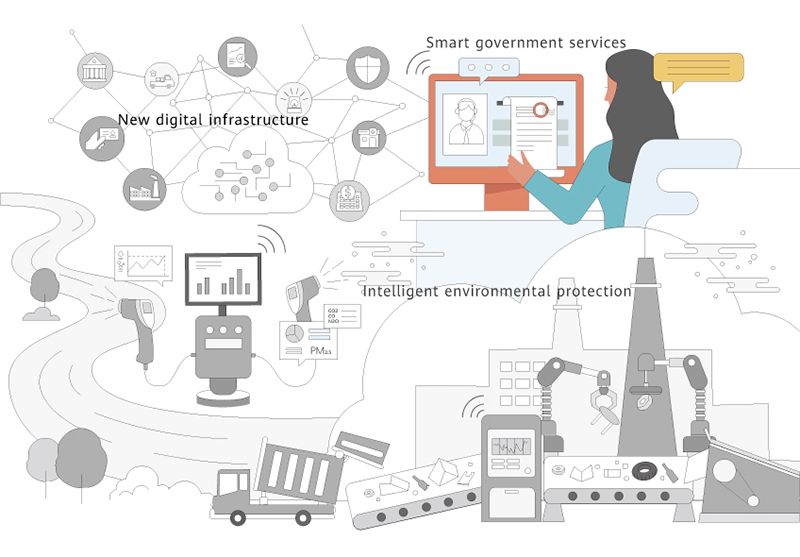
Smart government services make cities more human
Snapshot from the future: Proactive, precise provision of government services
Machine recognition technology makes contactless services possible. Today, in most of China's developed provinces, citizens do not need to go to government offices to access government services. They can now access them directly through their smartphones. Over the next decade, the digitalization of government services will be taken to the next level.
- Digital identity authentication will be widely adopted. The ID cards, drivers' licenses, social security cards, and bank cards that people carry at all times will be digitalized.
- Digital credit will underpin and restructure many public service processes and the customer experience.
- Universal access to one-stop, e-government services will soon be realized. In the future, all government services will be remotely accessible.
Snapshot from the future: Blockchain-based data sharing
The application of blockchain as a base technology in digital government will support the provisioning of government services. We can examine how the technology could be used in different scenarios. Clear use cases include information infrastructure, smart transportation, and energy sectors such as electricity.
Blockchains are maintained by multiple parties, and use multiple cryptographic technologies to ensure secure transmission and access. They meet the needs of many different government data applications.
Blockchain technology uses hash pointers to prevent data tampering, and is a secure and trustworthy medium for data sharing. In a complex service environment such as digital government services, blockchain could be used to establish trust among government departments and dramatically increase the efficiency of data sharing.
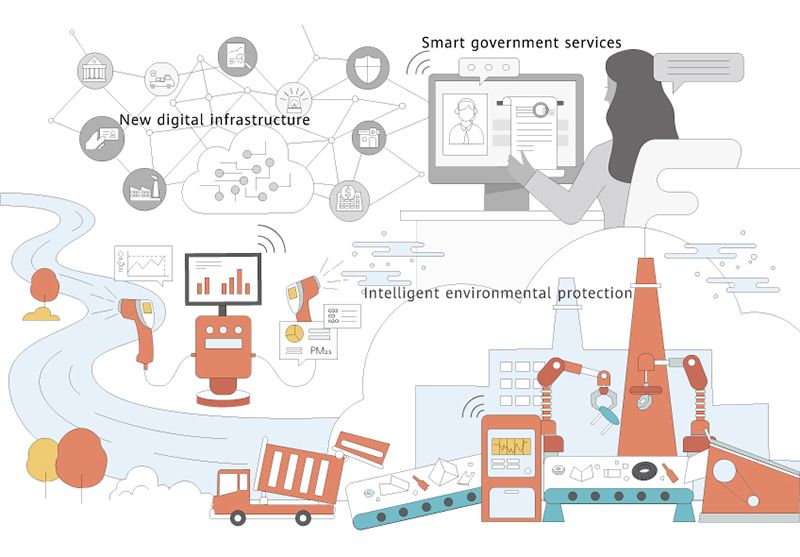
Intelligent environmental protection for livable cities
Snapshot from the future: Automatic waste disposal makes zero waste cities
With the help of AI, the entire waste management process in a future city, from collection and transportation to sorting and processing, will be automated and intelligent. Intelligent waste recycling bins, driverless garbage trucks, automated waste sorting robots, automated garbage recycling devices, and other innovative applications will emerge one after another. Hopefully, this will help to make more and more zero waste cities possible.
Snapshot from the future: Optical detection makes water sources safer
A new optical detection technology could be used to monitor water quality in real time throughout the entire process, detecting wastewater whenever it is present. Optical technologies can also be further integrated with analytics from the IoT, AI, and cloud computing. Sensors for water quality and deep data analytics will move us closer to 24/7, efficient, real-time, automated, intelligent water quality monitoring. This will provide quick warnings in cases of water contamination.
Snapshot from the future: Real-time AI air quality monitoring
In the future, we can consider integrating sensors with AI. Supported by machine learning, sensors will be trained to detect their surroundings and make preliminary judgments regarding potential changes. This intelligent upgrade of sensors will substantially improve the ability of cities to automatically sense environmental changes in real time.
The integrated sensors and software can monitor the concentrations of environmental pollutants in urban environments, such as PM2.5, PM10, CO, NOx, SOx, and O3, as well as other environmental parameters such as noise, temperature, humidity, air pressure, rainfall, and floods. Data is transmitted to the cloud platform in real time through wireless connections. The cloud platform provides a real-time visual dashboard for clear monitoring and management of the overall environment in key areas of the city.
More Outlooks
